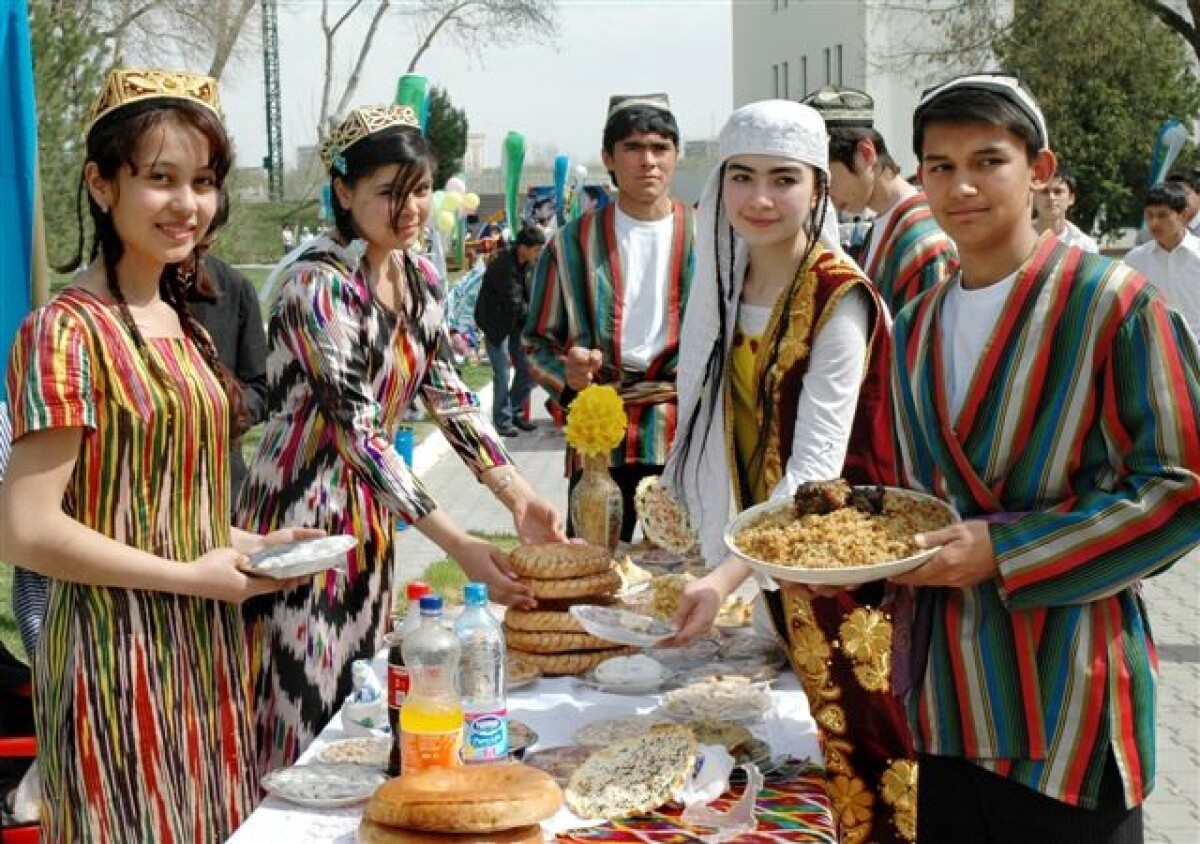
2015 is declared Year of Assembly of the people of Kazakhstan. In the Southern Kazakhstan region there are 20 ethno-cultural centers. The main objective of centers is revival of culture, language, customs and traditions of representative of different nationalities. The ethno-cultural centers organize concert programs, participate at annual festivals of friendship of the people of Kazakhstan, organize art exhibitions, products of local craftsmen and many other things.
Uzbek ethno-cultural center in our region is very active. For example the chairman of this center Ikram Hashimzhanov gave to the Regional Historical Museum samples of national clothes of the Uzbek people. These historical and ethnographic materials are given to the museum and illustrate the traditional culture of the Uzbek people. Further we would like to represent and discuss in more details about some of them.

Tubeteika — male headdress, also known as lightweight cap, have round or square shape, peaked or flat. Traditionally this headdress is worn both in cities and in urban areas in Central Asia. The basis of the cap is cotton white fabric, starched and quilted on top by artificial fabric of back color. The cap is especially cut with four equilateral triangles, when combining them it gives tetrahedral shape. The headdress is decorated with embroidery of four separate elements in the form of feathers. The bottom of the headdress is edged by silk artificial fabric and decorated with artificial embroidery.
Museum’s collection has men’s caftan — the Uzbek robe with robe — yahtag. Caftan is popular in Central Asia, including Uzbekistan, Afghanistan Tajikistan, Kazakhstan, Kyrgyzstan and other neighboring countries.

In old time the undercoat was done from inexpensive white or stuffed cotton fabric. On top it was covered with velvet, cloth and velveteen. Today, caftan is worn both by elderly people and youth. It is quite spacious and has long straight sleeves. The caftan is designed for everyday wear. The front surface is made of the artificial fabric ornamented with multi-colored stripes. The collar of the caftan is trimmed the neckline. The shirt yahtag, which is worn under caftan, is wide and straight. It is made of cotton fabric. Inside it has sections and sleeves short and direct. The collar of the shirt has the triangular form.
One of the essential items of Uzbek people’s clothing is belyama — a scarf belt for a men’s suit. It is made of artificial silk. The fabric represents an iridescent combination of color spots in a pattern which rhythmically alternate by different sized and color stripes. Three wavy lines are embroidered along the edges of the belt.

Burqa — the Uzbek street women’s costume. It is a special robe-gown with false sleeves, which was worn with chachvan — the grid covering the face. The robe has wide shape. The front part is sewed from the dense cotton fabric of gray color. The undercoat is made of color and gray cotton fabric. End of 19th — beginning of the 20th century is the heyday of culture of wearing a burqa among the Central Asian people.
The historical and ethnographic materials shown in exposition of the Regional Museum represent history of development of ethno-cultural associations, lifestyle of people of different nationalities and preservation of national traditions and customs. Promoting the ideas of international consent, tolerance and patriotism is embodied through acquaintance with the things of everyday use, traditional for representative of different nationalities particular the Uzbek people.
Aigul Zholbashan
Research Associate
Regional History Museum of South Kazakhstan
